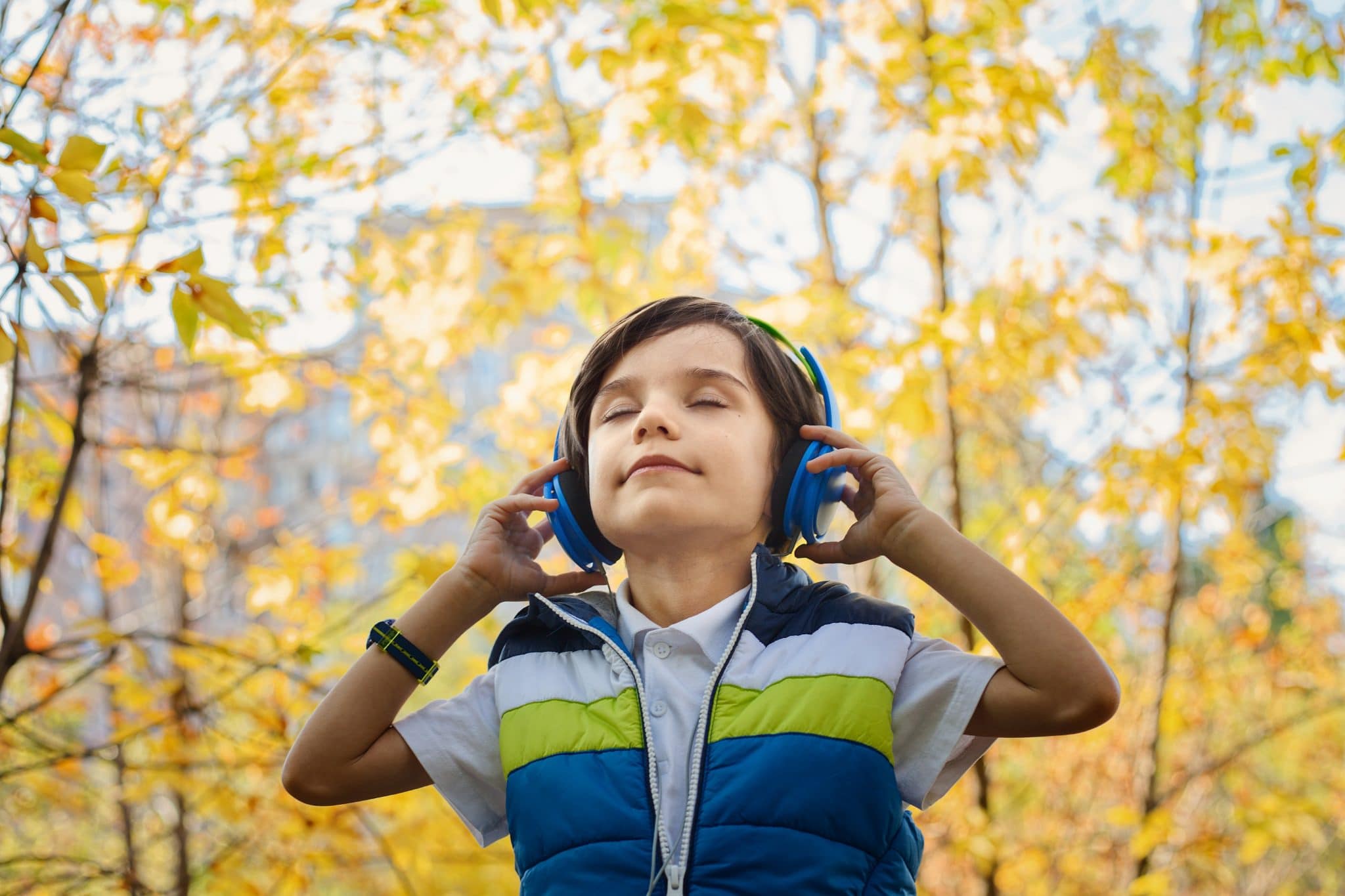With school out for summer and regular activities such as hanging out with friends or going to camp postponed, children are spending more time than ever at home streaming content. With that comes an increase in headphone usage, putting your child’s hearing at risk.
Below is an explanation of safe listening habits and a plan for how you can protect your child from damaging their hearing by wearing headphones.
Do They Make Headphones for Children?

There are a number of headphones on the market advertised as being able to keep children safe. For the most part, the manufacturers do this by capping the decibels at 85. According to Dr. Rick Neitzel, as associate professor of environmental health sciences at the University of Michigan, “exposure is not just intensity – it is also how long it lasts and how frequently it occurs.”
While 85 decibels is considered the cutoff for when sounds become unsafe, Dr. Neitzel does not agree. “This 85-decibel number has achieved mythical status not because it is safe but because it is one of the few ways that occupational noise is regulated.”
Child headphones additionally come with comfortable ear pads and a long battery life. But all this does is allow children to listen for longer.
What Is Considered Safe?
According to Dr. Neitzel’s recent paper on recreational sound exposure, unlimited listening is safe at 70 decibels.
Unfortunately, noise levels do not remain steady. While what you are listening to may start out at a safe level, the volume may increase without you even realizing it.
In addition, noise exposure is cumulative. Mowing the lawn, playing an instrument and even clanging pots and pans together while putting away the dishes can add to the day’s noise exposure.
Are Your Child’s Ears Already Damaged?
Hearing loss does not simply make sounds softer; it makes communicating more difficult. Signs you may be experiencing mild hearing loss include:
- Speech sounding muffled
- Music sounding dull
- Conversations feeling difficult
Tinnitus is also an indication you have damage to your inner ear, as it takes less exposure to experience a ringing in the ear than to cause hearing loss.
How to Make Your Child’s Listening Safer
Simple ways to help protect your child’s hearing include:
- Making sure you cannot hear sounds coming from their headphones
- Locking their volume controls or periodically checking the levels
- Talking to your child to make sure they can still hear you over their music
- Ensuring your child takes breaks from listening
While noise canceling headphones are pricey, they allow your child to listen clearly at a safe volume, as they eliminate distracting background noises.
The best way to protect your child’s hearing is to have them tested. A hearing loss screening every three years can make sure if there is any damage, it is caught early and treated.
To learn more about protecting your child’s hearing or to schedule an appointment with a hearing expert, contact Charleston ENT & Allergy today.
